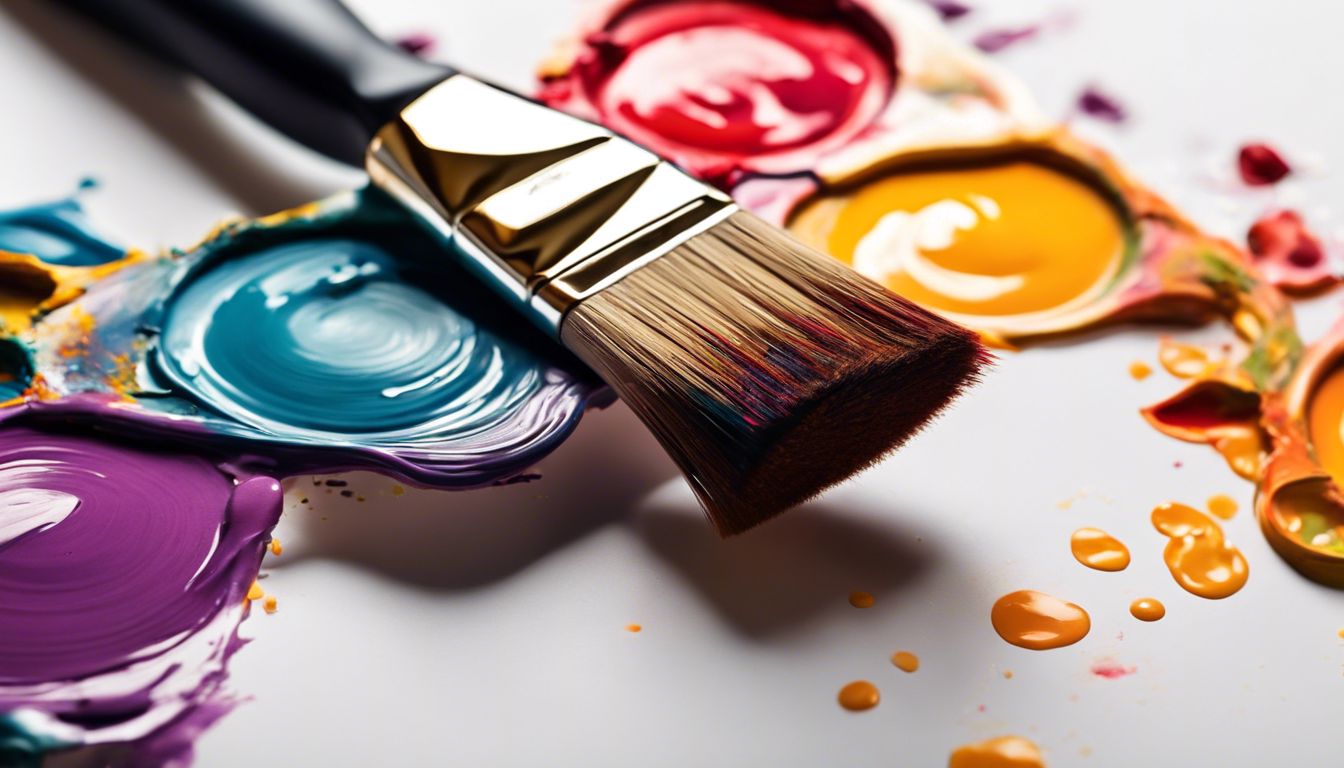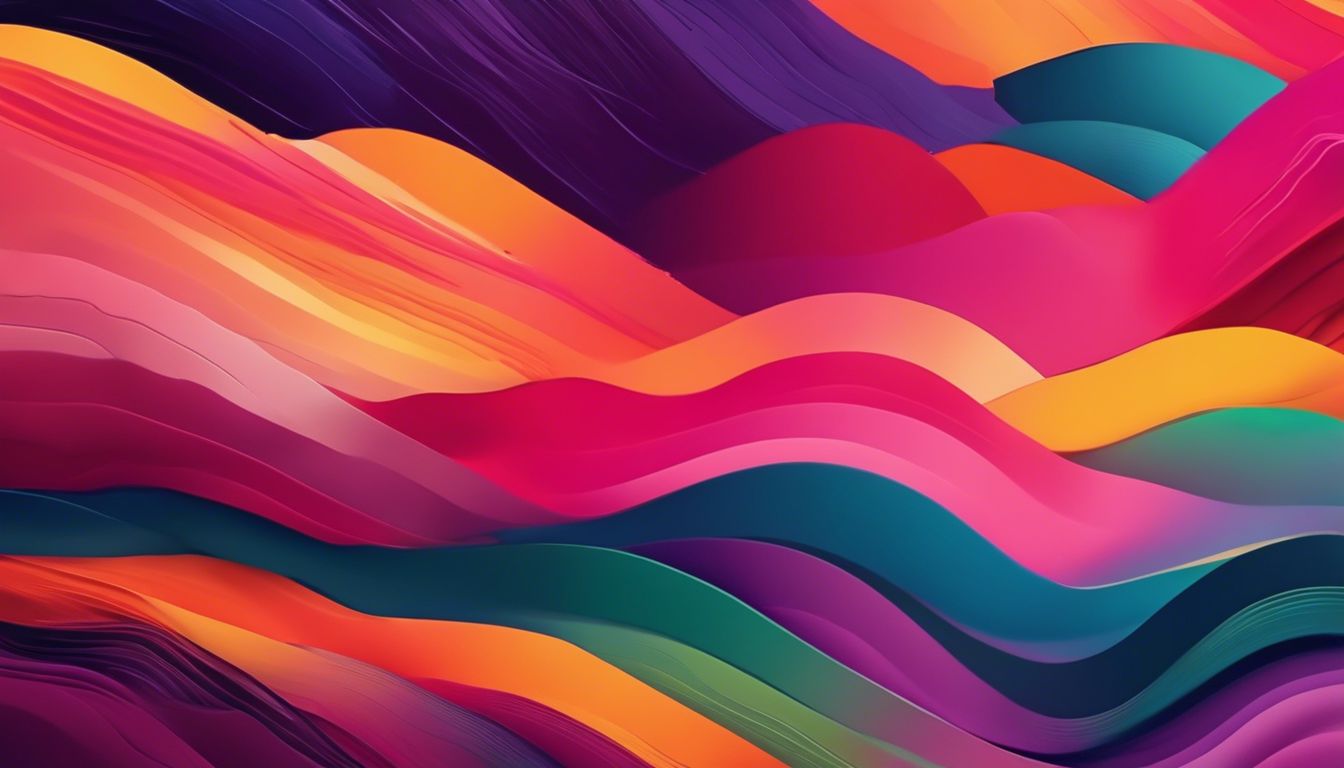

Are you struggling to create captivating animations that bring your ideas to life? Look no further! Style frame animation is the key to transforming your concepts into visually stunning videos. With our ultimate guide, you’ll learn everything there is to know about style frames and how they can revolutionize your motion design projects. Get ready for a creative journey like no other!
Key Takeaways
- Style frame animation is an important part of the design process as it helps communicate visual ideas and ensure everyone is aligned on the desired look before starting complex work.
- Style frames are still images that represent the intended design style, mood, and overall look of a video or animation project.
- Effective style frames include key elements such as composition, color palette, texture, and specific visual details to convey the desired visual style and mood.
- To create effective style frames, gather inspiration, brainstorm ideas with your team, sketch out rough compositions, choose a color palette and visual style, refine the design in detail while seeking feedback from clients or teams.
Explanation of style frames and their importance
Style frames are key parts of the design process. They are like a single shot from an animation or video. These still images show core visual ideas. Using colors, textures, and mood, they bring a clear vision to the team.
This is big in making videos and animations! Style frames ensure everyone knows what the final product should look like before moving into complex work phases. Making changes early keeps us on track with time and budget goals.
The Definition and Purpose of Style Frames


Style frames are visual representations used in video and animation production to showcase the intended design style, mood, and overall look of a project. They serve as a reference point for the creative team and clients to ensure everyone is aligned on the specific visual direction before moving forward with the animation process.
Definition of style frames
A style frame is a still image. This image shows what a scene could look like in an animation or video. It includes the colors, textures, and shapes that you might find in the final product.
These frames are used to share visual ideas with clients or teams before work starts.
Style frames play a big part in motion design and video production. They help tell the story of what’s going to be on screen once it’s animated. With style frames, everyone can see the exact look and feel of different scenes early on!
Importance in video and animation production
Style frames play a big role in video and animation production. They give the team clear direction on how to animate scenes. For example, they might show the colors, textures, and feelings in each part of an animation project.
This helps everyone know what look they’re working towards.
Another key point is that style frames save time and money. The team will make fewer changes during production when the design style is set from the start. Also, clients can see their ideas come to life before final animation starts.
This makes sure everyone likes the direction of a motion graphics or YouTube video job.
The Anatomy of Effective Style Frames


Effective style frames include key elements that help convey the desired visual style and mood for a video or animation project. These elements may include composition, color palette, texture, and specific visual details that align with the overall aesthetic and storytelling of the piece.
Key elements to include in style frames
Style frames are more than just pictures. They hold power in the world of video and animation. These are some parts you should never miss in style frames:
Examples of effective style frames
For illustrative purposes, let’s explore a few examples of successful and efficient style frames that have truly punctuated the final product’s message.
| Style Frame Example | Description |
|---|---|
| 1. Pixar’s ‘Up’ | The style frames for Pixar’s ‘Up’ expertly caught the vibrant and whimsical essence of the animated feature. The frames had a detailed, colorful aesthetic that served as a perfect guide for the final production. |
| 2. Google Doodle Animations | These often feature simplistic but impactful style frames. The doodles harness the power of simplicity, making complex concepts easily relatable and maintaining Google’s minimalist aesthetic. |
| 3. ‘Spider-Man: Into the Spider-Verse’ | The style frames used in this film were a blend of comic book aesthetics and 3D animation techniques. This unique style choice helped create a visually stunning end product that resonated with audiences. |
| 4. ‘The Lego Movie’ | A great example of how style frames can capture the look of tangible materials. The frames relied heavily on replicating the texture and light reflection of real LEGO bricks, giving the animation a realistic feel. |
| 5. ‘Moana’ | The style frames in ‘Moana’ beautifully illustrated the lush, tropical landscapes and vibrant color palette. This provided a clear vision for the film’s final animated scenes. |
Each of these examples demonstrates the power and significance of well-crafted style frames in shaping the final animated product.
The Process of Creating Style Frames
To create style frames, follow these steps: gather reference materials and inspiration, brainstorm ideas with your team, sketch out rough compositions, choose a color palette and visual style, refine the design in detail, and present the final style frames to clients or teams for feedback.
Steps to creating style frames
To create style frames for your animation or video project, follow these steps:
- Start by gathering inspiration and references from sources like Pinterest or other design references to establish a clear visual direction.
- Determine the specific visual style you want to achieve for your project, considering factors like color palette, composition, and overall aesthetic.
- Sketch out rough ideas or thumbnails to brainstorm different concepts and compositions for your style frames.
- Once you have a clear vision for your style frames, begin creating them using digital tools or software like Milanote or Adobe Creative Suite.
- Focus on including key elements that convey the mood, atmosphere, and emotion you want to evoke in your final animation.
- Pay attention to detail and ensure that each frame is meant to convey the finished look of the animation or video.
- Collaborate with your team and gather feedback to make necessary revisions and updates to align with the desired vision.
- Communicate effectively with your client or director throughout the process to ensure everyone knows the specific visual direction of the project.
- Finally, present your style frames as still images or a slideshow format to showcase how they come together and deliver the intended look and feel for your animation or video project.
Best practices for creating effective style frames
To create effective style frames for your video or animation project, here are some best practices to follow:
- Understand the vision: Before starting the design process, make sure you have a clear understanding of the project’s overall vision and goals.
- Research and gather inspiration: Look for visual references and examples that align with the desired style and mood of the project. Websites like Pinterest can be helpful for collecting inspiration.
- Focus on storytelling: Use the style frames to convey a narrative or story. Consider how each frame contributes to the overall message and emotional impact.
- Use strong composition: Pay attention to how elements are arranged within each frame. Create visually pleasing compositions that guide the viewer’s eye and highlight important details.
- Choose a consistent color palette: Select colors that evoke the desired atmosphere or emotion for the project. Ensure that the colors used in each frame work harmoniously together.
- Incorporate texture and detail: Add depth and visual interest to your frames by including textures or intricate details. This can enhance the overall quality of your visuals.
- Seek feedback from your team or client: Share your style frames with others involved in the project to gather constructive feedback and ensure alignment with everyone’s expectations.
- Iterate and refine: Continuously iterate on your style frames based on feedback received. Refine them until they accurately capture the intended look and feel of the final animation.
Common Pitfalls and How to Avoid Them
Avoiding common pitfalls is essential when creating style frames. By avoiding mistakes such as cluttered designs or lack of clarity, you can ensure that your style frames effectively convey the desired visual direction.
Additionally, staying open to feedback and being willing to make necessary revisions will help you overcome challenges in the process.
Mistakes to avoid when creating style frames
Creating style frames for motion design can be challenging, but by avoiding these common mistakes, you can enhance your designs and create more impactful visuals:
- Neglecting to understand the client’s vision: Make sure you have a clear understanding of the client’s brand, objectives, and target audience before starting the design process.
- Overcomplicating the composition: Keep your style frames clean and simple. Avoid cluttering the scene with unnecessary elements that may distract from the main message.
- Ignoring color theory: Choose a color palette that complements the mood and message of your animation. Ensure that colors work harmoniously together to communicate effectively.
- Lack of attention to detail: Pay close attention to every element in your style frames, including typography, textures, and details. Small details can make a big difference in creating a polished look.
- Inconsistent visual style: Ensure consistency throughout all style frames to maintain a cohesive look and feel for your animation project.
- Failing to consider motion: Remember that style frames are meant to convey the finished look of an animation. Think about how elements will move and animate when designing your frames.
- Forgetting about storytelling: Style frames should support the narrative or story you are trying to tell. Incorporate visuals that help communicate the message effectively.
- Not seeking feedback early on: Share your style frames with your team or clients early in the process to gather valuable feedback and make necessary changes before moving forward.
- Straying from the brand guidelines: If working within existing brand guidelines, ensure that your style frames align with those guidelines in terms of fonts, colors, and overall visual direction.
- Disregarding technical limitations: Keep in mind any technical constraints or specifications for animation production during the creation of your style frames.
Tips for overcoming challenges in the process
Creating style frames can sometimes be challenging, but with these tips, you can overcome any obstacles:
- Start with a clear vision: Before diving into the design process, make sure you have a clear understanding of what you want to achieve with your style frames. This will help guide your decisions and keep you focused.
- Communicate effectively: Regularly communicate with your team or client to ensure everyone is on the same page. Share updates, gather feedback, and address any concerns promptly to avoid misunderstandings.
- Embrace feedback: Be open to receiving feedback from others and be willing to make changes based on their suggestions. Remember that constructive criticism can help improve your work and make it even better.
- Stay organized: When working on multiple style frames or iterations, organization is key. Use tools like Milanote or Pinterest boards to keep track of your references, ideas, and progress.
- Experiment and iterate: Don’t be afraid to explore different ideas and variations of your style frames. Keep iterating until you find the best solution that aligns with your project’s goals and vision.
- Collaborate with others: If possible, involve other team members or designers in the process. Collaboration can bring fresh perspectives and ideas that can enhance the quality of your style frames.
- Break it down into smaller tasks: If you feel overwhelmed by the complexity of creating style frames, break down the process into smaller tasks. Focus on one element at a time (e.g., composition, color palette) to ensure attention to detail without feeling overwhelmed.
- Manage your time effectively: Set realistic deadlines for each stage of the style frame creation process and stick to them. This will help you stay organized and ensure timely delivery of your work.
- Don’t be afraid to experiment: Style frames are an opportunity for creativity and experimentation; don’t be afraid to think outside the box and try new techniques or approaches.
- Trust your instincts: Remember that you are the designer, and your creative intuition is valuable. Trust your instincts and make design decisions that align with your vision and expertise.
The Impact of Style Frames on Final Production
Style frames have a significant impact on the final production as they influence the visual direction and overall look and feel of the animation project.
How style frames influence the final product
Style frames play a crucial role in shaping the final product of a video or animation project. They are visual representations that help bring the design style and vision to life before the actual animation begins.
By creating style frames, designers can effectively communicate their ideas to clients or teams, ensuring everyone knows the specific visual direction and aesthetic they want to achieve.
These still images highlight key elements such as composition, color palette, and atmosphere, allowing for feedback and adjustments before committing to the final animation. Ultimately, style frames guide the production process and ensure that the finished product aligns with expectations and delivers on its intended message and look.
Examples of successful projects using style frames
From big screen movies to digital marketing campaigns, style frames play a significant role in the success of various projects. Here are some examples of successful projects that utilized style frames effectively.
| Project | Type | Description |
|---|---|---|
| Avatar | Movie | James Cameron’s Avatar used style frames to visualize the exotic world of Pandora, with its unique creatures and landscapes. This contributed to the movie’s groundbreaking visual effects. |
| Apple’s “Welcome Home” ad | Digital Marketing Campaign | Apple’s “Welcome Home” ad for the HomePod speaker used style frames to map out the visually stunning choreography and changing room dynamics, becoming a global sensation. |
| Spider-Man: Into the Spider-Verse | Animated Movie | Style frames were extensively used in the production of Spider-Man: Into the Spider-Verse. They helped to achieve the unique comic book aesthetic and vibrant color scheme that made the movie stand out. |
| Google’s “Year in Search” video | Video Series | Google’s annual “Year in Search” videos leverage style frames to visually represent data and search trends in an engaging way, successfully capturing viewers’ attention. |
Conclusion
In conclusion, understanding style frames is essential in the world of video and animation production. By carefully creating effective style frames, you can guide your team and clients towards a clear vision for the final product.
Avoiding common pitfalls and embracing best practices will ensure that your style frames have a significant impact on the overall success of your project.
FAQs
1. What is a style frame in animation?
A style frame is meant for animators to show the look of an animation to clients or teams before fully diving into the work.
2. Who creates a style frame?
Illustrators create a template that consists of 2D or 3D designs which they upload as storyboard frames.
3. Why is it important to have a style frame in creating animations?
It’s important because it helps the animator explain their vision for the final result and also makes sure everyone on the team agrees with it.
4. Can we use style frames on any device or user interface?
Yes, you can view and move around your uploaded illustration and edits on any user device once they are uploaded accurately inside your chosen software.
5. Are all animations created from storyboards similar to those made using Style Frame?
No, while both are used by animators, they serve different purposes when showing how an animation will play out over time.

